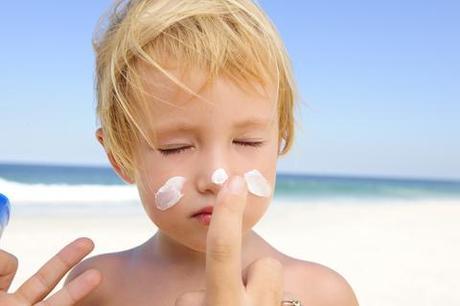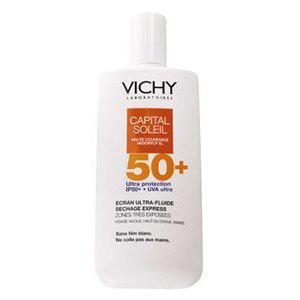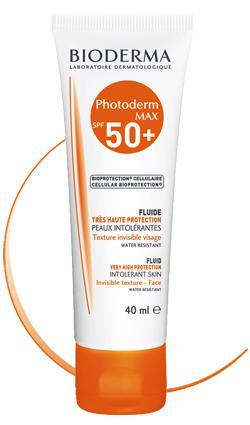
I usually don’t preface my posts. But, thanks for being patient on the release of this post. There was a lot of information to devour and for some reason I had a hard time writing it. I hope this is useful and written plainly and clearly! At 2,000 words, I know it is long but it beats the pages and pages that are online. If you are pressed for time skip down to the summary tips.
It is that time of the year where we will all be enjoying the good weather… outdoors. Meaning, we will all be getting more sun exposure. While sun exposure is crucial to stimulating the skin to produce Vitamin D, prolonged sun exposure increases the risk of melanoma. As any health conscious person or parent, we slather sunscreen onto ourselves and our children. But wait! Can that sunscreen be detrimental to all of our health? The answer is YES!
The Environmental Working Group’s (EWG) recently released sunscreen guide reveals that 60% of sunscreens in the United States are inadequate against protecting against UVA radiation. The guide reviewed 292 brands and 1700 products. It ranked products 0-2 for low hazard, 3-6 for moderate hazard and 7-10 for high hazard.
As an aside, UVA rays comprise 95-97 % of the UV radiation that gets through our atmosphere while UVB only 3-5%. UVB penetrates on the surface of the skin while UVA penetrates deeper and may cause DNA damage. Furthermore, many of the sunscreens in the United States contain chemicals hazardous to our health.
My goal with this post is to equip you with knowledge to choose a safe sunscreen. What the post will not do is go into the controversies: Do sunscreens increase risk for melanoma? Can they lead to vitamin D deficiency? Etc.
Types of Sunscreens
Bear with me, I will try and not bore you with anything too scientific.
Sunscreens have not been regulated since 1978 in the USA. SPF factor only tells you how effective a sunscreen is against UVB rays which cause sunburn. Currently, US sunscreens are not rated for how protective they are against UVA rays.
There are two types of sunscreens: non-mineral and mineral. And some that combine both.
The non mineral sunscreens penetrate the skin, are potentially disruptive to hormones, are allergenic, and have inferior stability at the skin surface (think free radical production when they break down). One such example is oxybenzone, the most common ingredient found in sunscreens. Scientists recommend not using sunscreens containing oxybenzone on children because of this hormone disruption. A safer non-mineral sunscreen is one containing avobenzone.
Mineral sunscreens are ones containing zinc, or titanium. These do not breakdown in sunlight, are not usually absorbed ( so do not disrupt the body’s hormones), are not allergenic and are more effective at blocking UVA rays than non-minerals. These sunscreens are a good choice for children and according to EWG have the best safety profiles of the choices in the United States.
There are more effective minerals: Mexoryl, Tinosorb-M and Tinosorb-S. All three of these are 3-5 times more effective than avobenzone.
Unfortunately, Mexoryl is not readily available in the USA. Loreal has only been approved to use Mexoryl in their La-Roche Posay brand. But be careful, two of the sunscreens reviewed in this line do not contain Mexoryl but do contain oxybenzone. The two that do contain Mexoryl despite being given a level 2 and 3 rating contain the hazaradous chemicals: methylparaben and propylparaben (both are hormone disrupters) and triethanolamine. Mexoryl has been widely available in Europe since 1991however.
Tinosorb has not been approved for use in the USA although one company applied for FDA approval… back in 2005. They are still waiting.
What makes sunscreens hazardous to our health?
There are two major substances to avoid when buying sunscreens: oxybenzone and Vitamin A which is found in sunscreens as retinyl palmitate. These are unfamiliar words to many of us and may be difficult to remember. Write them down on a slip of paper and put it in your wallet or purse. The next time you are at the pharmacy or grocery store, pull the paper out and see how many sunscreens on the shelf contain one or the other or both.
What did you find? You will find that most sunscreens on the store shelves contain one, the other or both chemicals. The brands commonly seen on the US shelves include: Coppertone, Aveeno, Nuetrogena, Bull Frog, And Banana Boat to name some.
I remember my parents using Coppertone on us as kids. And I have used it on my own children. I am just horrified thinking of all the toxins we have been exposed to.
Oxybenzone
What makes oxybenzone so hazardous? It absorbs through the skin. Anything that absorbs through the skin can have effects on the whole body (systemic effects). Oxybenzone is potentially disruptive to our hormones. Think about this a little. How many food items (milk, meat etc) contain hormones? It seems as if we are being bombarded by hormones unnecessarily every day.
What I have seen clinically is that the onset of menarche(start of a girl’s menstrual cycle) and menopause both have gotten younger and younger. At least, these are my observations over 14 years.
Retinyl Palmitate
Retinyl Palmitate is thought to be photocarcinogenic. Another big word meaning that when it is exposed to sun, it speeds the growth of skin tumors. It is added to 30% of all sunscreens.
You may ask, why would sunscreen manufacturers add retinyl palmitate to sunscreens? In addition to being protective against the sun, they are antioxidants and being a vitamin A derivative slow aging (for beauty). These photocarcinogenic properties were probably not known at the time they were added. Or at least this is what we hope.
There are many other chemicals added to some sunscreens which make them even more unsafe. Have a look through the sunscreens given a high hazard ranking (7-10) to find these additional chemicals. You will have to scroll down to the end of the page. The common pharmacy and grocery store brands dominate these high hazard sunscreens.
Lastly, many sunscreens are advertised as having a high SPF when in actuality they don’t. This makes it dangerous for those using the sunscreen as they expect to get long lasting protection. Banana Boat Sport Performance Active Max Protect, SPF 110 sunscreen is one example. It is estimated to have an SPF of 12 not 110. This one was listed in the EWG “Hall of Shame”.
Why is nothing being done? The FDA was supposed to regulate sunscreens in 1978 but has not done so. Hopefully, with the recent EWG guide being released, regulations will be expedited. But until sunscreens in the United States are regulated, we can only be proactive.
What is one to do?
There are three things we can do: implement conservative measures against UVA and UVB rays, buy only the sunscreens listed with a low hazard ranking on the EWG guide or seek out the safer European mineral sunscreens. The later you can buy online despite that they cannot be manufactured in the USA.
Conservative measures include wearing protective clothing, wearing wide brim hats, seeking shade and avoiding midday sun. But for most outdoor enthusiasts, this is not practical.
Many of the sunscreens that have a low hazard rating are not sold in stores. You will likely have to buy them online. And unfortunately, they are higher priced than the ones commonly sold in stores.
I took the liberty of reviewing the prices of three sunscreens ranked a level 1, meaning low hazard. Of those given a 1 ranking, I took the time to look at each and every chemical listed in the sunscreen. This helped me to exclude some formulations given a level 1 ranking but contained individual ingredients ranking higher.
Here were several good choices I found given a ranking of 0-2 (low hazard) for all chemicals: California Baby was $19.99 for a 2.9 ounce tube, Badger $16.00 for 2.9 ounces and Aubrey Organics 11.96 for 4 oz.
Another alternative is to buy sunscreens containing Mexoryl ,Tinosorb-M or Tinosorb-S. Although they are not manufactured in the USA, they are readily available online. See below for some links. Or if you are like my favorite expat couple John and Ammena Falchetto who live in Provence, France, you can pop down to your local pharmacy and pick from a plethora of safe brands. If you haven’t read either of their blogs, you should.
What I use
While my choices for sunscreen for my body and my children may not have been safe until recently, I have been fortunate enough to happen upon two safe (and effective) products that I have been using on my face for years.

I purchased Vichy’s product from France (and had it shipped to the USA) in 2002 after reading an article in Harper’s Bazaar touting the benefits of Mexoryl It is readily available abroad where we live now.

An experiment for you or not?
I was going to recommend that you bring your list of hazardous chemicals to your local pharmacy/grocery to see if you could pick out a safe sunscreen. Sounds easy? I thought so too…until I had to buy a sunscreen at the last minute. I scanned the shelves at Safeway and quickly excluded almost all the sunscreens found based on the presence of either oxybenzone or retinyl palmitate. I came across Nuetrogena pure and free baby 60+ sun block lotion which I thought was safe. It has avobenzone in it which is safe.
I should have known by the smell (despite being fragrance free) that it was not a good choice. I reviewed it on EWG’s guide after I returned from my hike only to find it was given a 7 (high hazard) rating. I failed to notice that it does contain retinyl palmitate. The print on the bottle is relatively small… or at least that was my excuse. It also contained other chemicals that are toxic: alumina, benzyl alcohol, BHT, and methylisothiazolinone. All of these were rated a 6 (high hazard).
How can anyone remember all these chemicals? After this experience, I would recommend that you buy from Europe via online sites or take the EWG guide to the store with you and buy only what has been reviewed.
Summary
• The FDA started to develop sunscreen regulations in 1978 but never completed them. This makes it possible that every sunscreen produced can be hazardous
• SPF only tells you how protective a sunscreen is against UVB rays, which cause sunburn
• UVA protection of sunscreens is not rated in the United States
• The safest and most effective minerals in the USA are zinc, titanium and Mexoryl SX
• The safest minerals outside of the USA are Tinosorb-M and Tinosorb-S
•The two most hazardous chemicals to avoid are: Oxybenzone and retinyl palmitate
•There are so many unsafe chemicals added to sunscreens. It is hard to know them all: buy from the EWG guide or rely on European made sunscreens
• If you live in Europe in abroad likely you will have the safest sunscreens at your disposal but be sure to read the ingredients on the bottle.
Discussion
What sunscreens have you been using for yourself? Your Children? Will you be making a change? I know I will.
I am not receiving any compensation for letting you know my two favorite products. This was an independent review.


COMMENTS ( 1 )
posted on 07 July at 04:15
i'm trying to be more aware of the products i use and enjoyed your article, BUT i'm not sure if it's the exact same product, but you mentioned Vichy Capital Soleil Protective Micro-Fluid Face 50+ and i recently bought Vichy Capital Soleil Ultra-Light Fluid Face 50+ in canada and although the box says it's paraben-free, i noticed that their website (i could only see from the usa website as they don't have it for canada) and it clearly states methylparaben as an ingredient. however, after i contacted vichy, they can't confirm whether the canadian product has the same ingredients as the usa version at this time.